

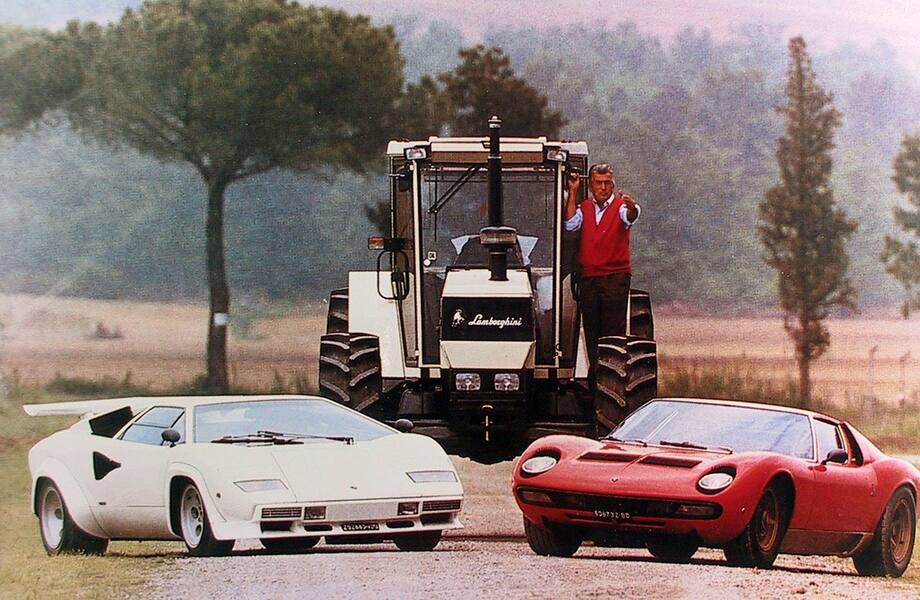
The year is 1963. Ferruccio Lamborghini, a successful tractor manufacturer, is unhappy with his Ferrari. He thinks the car's clutch breaks too easily. He drives to the neighbouring village of Maranello and knocks on the door of none other than Enzo Ferrari.
The meeting, which was quite short, would change the fate of supercars forever. It would be a textbook example of how to not treat your customers. Mr Lamborghini explained that the clutch was bad. He also made a suggestion on what Mr Ferrari, with simple means, could do for the clutch to last much longer.
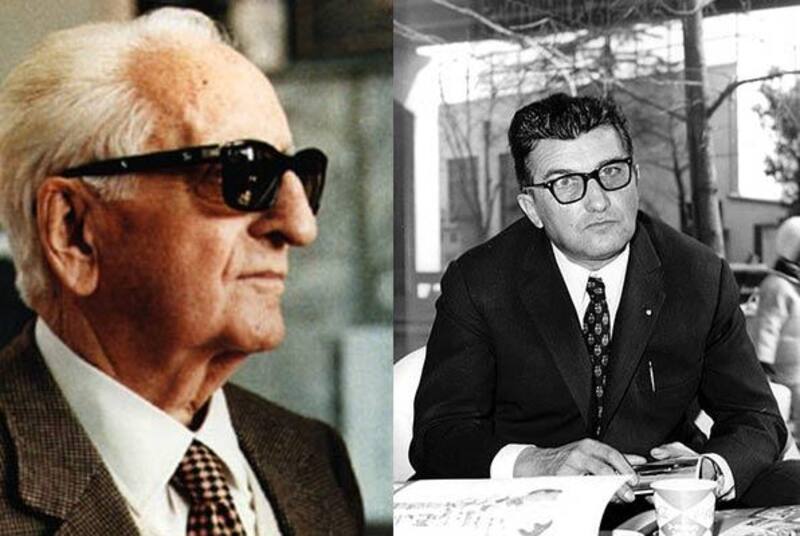
Enzo Ferrari had a very hard time accepting constructive criticism. Instead of listening to the proposal, he rejects Ferruccio with the now-famous words:
“Let me make cars. You stick to making tractors.” - Enzo Ferrari
Ferruccio drove home. Furious. Instead of being well received for his ideas, he had been rejected in the worst possible way. The insult was painful. Really bad. He was also an engineer. His tractors were the best in Italy.
On the way home, he made a fateful decision. He would also build sports cars. And – they would be faster and better than Enzo Ferrari's. Lamborghini, as we know it, was born.
The work started immediately. In just four months, a small factory was built – in Sant'Agata – and the first car model saw the light of day. The car was presented at the annual car show in Turin 1964 and was called the Lamborghini 350 GT.
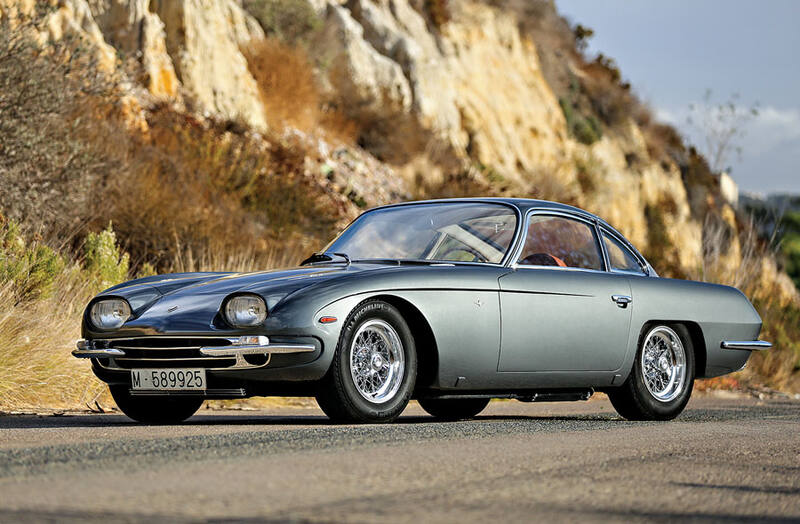
Lamborghini 350 GT
How could Lamborghini build and finish a car in just four months? There was an explanation. Two years earlier, something important happened in Maranello. Something that would be absolutely crucial to Ferruccio Lamborghini's success. Five gentlemen had stepped into Enzo Ferrari's office in Maranello. Among others, Carlo Chiti who was the chief engineer, and legendary development manager Giotto Bizzarrini.
They were unhappy that Enzo's wife, Laura Ferrari, was making important decisions on the factory floor. They wanted Laura to stop messing about in the production.
Enzo Ferrari was furious. Instead of correcting his wife's behaviour, all five key people got fired on the spot. These five immediately started a competing business in Bologna – a design agency for racing and sports cars called ATS.

Engine blocks for the Countach and the marine division.
When Ferrari asked Lamborghini to stick to building tractors, and not try to give him any suggestions on how to improve Ferrari's products, Lamborghini approached these five gentlemen. The five former key people at Ferrari could then, very quickly, build a car for Lamborghini.
The first car – the 350 GT – is quite well received. 13 customers buy the car right away. Over the next two years, a total of 120 cars will be built. These cars are priceless today.
The 350 GT was a slow and cautious start. This car hardly worried Ferrari. But in 1965 it was time for a car show in Turin again. Now things became completely different. For here came the car that would shake up the world of supercars completely. Including Ferrari. The car that would, seriously, put Lamborghini on the map.

Lamborghini Miura
The car was revolutionary. Inspired by F1, the engineers had put the engine behind the driver. It became the first production car with the engine in the centre of the car. It was called Lamborghini Miura and immediately became a success. Finally, Mr Ferruccio had the car he wanted to take on Enzo Ferrari with, after that horrible meeting in Maranello.
Miura was put into production in 1967. A total of 764 cars were built until production was ended in 1973. At the same time, Jarama and Urraco were built.
The beginning of the 70s would not end well, unfortunately. The oil crisis came to say hello. The world was sent down in a spiral of economic disaster. The supercar market shrank by 80 per cent in just a year. Although work on the legendary Countach had begun, Ferruccio Lamborghini was forced to sell his company.

Ferruccio Lamborghini and a Countach
Ferruccio Lamborghini completely stops building cars and tractors. Instead, he retires to his mansion on Lake Trasimeno in Umbria. Where he starts a small production of wine. Later, a hotel with a restaurant and a golf course is also built. The place is called Tenuta Lamborghini and exists today.
However, the new owners of the factory continue. After some time, on to the stage comes the car that many, including myself, had on a poster in their rooms growing up. It was the coolest and most futuristic thing the world had ever seen. The car looked like a spaceship and came to define the brand forever – the Lamborghini Countach.
Like the Miura, the engine was in the centre, behind the driver. But now it was longitudinally mounted. The design was from outer space. The doors opened upwards! No one had seen anything like it. The name “Countach”? It is pronounced coon-tasch and simply means "wow" in Italian.




Factory pictures by Bengt Holm - James Holm's father, who also was an automotive photographer
The car that was put into production had a four-litre V12 and was called the LP400. It had a total of 375 horsepower, astonishingly high power output in those times. Over the entire life cycle of the model, which would last for a total of 16 years, over 2,000 units would be manufactured. The last variant, built between 1988 and 1990, had a 5.2 litre V12 that produced 455 horsepower. That project was led by none other than Horacio Pagani, who, at the time, worked for Lamborghini.
In the meantime, Lamborghini went bankrupt and changed owners twice. In the wake of the oil crisis, the money runs out at the end of 1978. The company goes bankrupt and is bought by two Swiss brothers with the last name Mimran in 1980.
These two run the company with some success for ten years. In 1987 the company was sold to Chrysler. The Mimran brothers make a lot of money buying the bankrupt estate, refining the company and then selling it to the huge American corporation.


In 1990, the replacement for Countach was launched. This car would also be designed by the legendary Marcello Gandini. Lamborghini Diablo. When it came, it was the fastest car in the world. Like the Countach, it had a large mid-mounted V12 behind the driver. The early cars had a 5.7-litre engine. Later variants had 6 litres. During the ten years the car is manufactured, almost 3 000 units roll off the production line. At the same time, the company changes owners three more times (!). First to a corporate group in Indonesia, and then to a Malaysian investment company.
At the end of 1998, the turbulence around the ownership would be settled for good. The powerful AUDI AG buys Lamborghini for $110 million. AUDI immediately launches a program to restructure and modernize Lamborghini. As a consequence, the last two year models of Diablo 2000 and 2001 are of a significantly higher quality than previous cars. Above all, the difference between dashboards and interiors is noticeable. At the same time, work on a "baby Lambo" continues – what would later become Gallardo.

Lamborghini Murcielago
In 2001, the first Lamborghini will be built entirely under the supervision of AUDI – Lamborghini Murcielago. It came to be built in over 4,000 units over ten years in many versions. This is 25% more cars than Diablo.
Almost simultaneously, in 2003, Lamborghini Gallardo is launched. Gallardo was a more simple car than Murcielago. It had a V10 and not as spectacular a design. Among other things, the doors were opened outwards, as on a regular car, instead of upwards as on big brother Murcielago. In addition, the car was about half as expensive. It was still very much a supercar, with an exotic brand, but with simpler design and construction.
Gallardo became an unparalleled success in the world of supercars. An incredible 14,000 (!) cars were built during the car's ten-year product life cycle, in a dozen different variants. Gallardo became the model that took Lamborghini from being a small brand on the periphery to a supercar manufacturer to be reckoned with.
The car was mass-produced and many components were sourced from AUDI, for both good and bad. Many thought it was a bit sad that some cockpit details also were used in AUDI cars, like the RS6.

Lamborghini Gallardo
However, what the new car lacked in exclusivity, it gained in quality. Many times over. Having German engineers who built engines and powertrain made the car extremely reliable. Today, many Gallardos are on the roads with over 150,000 km without any problems. Something that would have been completely unthinkable just 10 years ago for a Lamborghini Diablo or Countach.
Murcielago was replaced in 2011 with the Aventador. In 2014 Gallardo was replaced with the Huracan. Today it is these two cars, and the Lamborghini Urus, that roll off the assembly line at the factory complex in Sant'Agata.

“Lamborghini is refinement, luxury and perfection” - Ferruccio Lamborghini
“Enzo Ferrari never spoke to me again. He is a great man, I admit, but it was incredibly easy to upset him” - Ferruccio Lamborghini
“Mechanics was in my blood and I knew I could beat Ferrari” - Ferruccio Lamborghini
“The race went like a dream for three quarters of the competition, then we ran off the road” - Ferruccio Lamborghini
“When you stop working you start to die” - Ferruccio Lamborghini
“You don't mess with a farmer” - Ferruccio Lamborghini
Besides making cars, Ferruccio Lamborghini produced many amazing quotes. We are unsure whether the above is true or not, but they are simply too good not to share here.

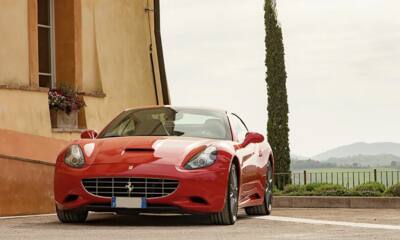










The latest news and stories. All the best roads, hotels and restaurants. Invitations to exciting events. Be the first to know by subscribing to our newsletter.
More news and stories from the world of Gran Turismo








































Our favourite roads, hotels, restaurants and places to visit



Beautiful road trips and famous racing tracks since 2002. Supercars only.
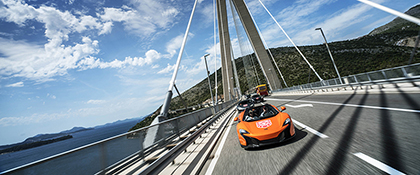
While our head offices are in Geneva, Switzerland, the team is spread throughout Europe: Sweden, Poland, Italy and Croatia. Please select the appropriate team member to contact below.
For general enquiries, you can always use info@granturismo.org. For event registrations, please use registry@granturismo.org.